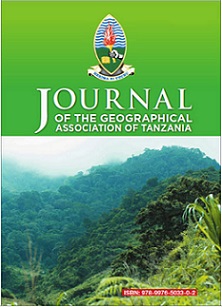Pottery and Poverty Reduction among Kisi Households in Ludewa District, Tanzania
Abstract
The study investigated the impact of pottery trade in reducing poverty among the Kisihouseholds in Ludewa district which is located very close to Lake Nyasa..The role of
pottery industry in breaking the vicious cycle of poverty among the Kisi began during
the Iron Age in the first millennium A.D. The Kisi people live in Ludewa District and a
few have spread to neighbouring districts like Kyela and Mbinga. The main economic
activity of the Kisi is fishing but after trade liberation in the 1980s fishing is overtaken
by pottery industry. The data for calculation of poverty index was collected from three
villages which are Lumbila, Nkanda and Nsele which had abudant raw materials for
pottery making along Lake Nyasa. The calculation of various indicators of poverty and
their relationship to pottery industry indicated that pottery has a reasonable impact on
poverty alleviation among the Kisi in Ludewa District. This is verified by the
improvement of housing whereby people involved in pottery industry had slightly
better housing than others. The same was applied to income poverty where villages
like Lumbila and Nkanda had a higher per capita income when compared to Nsele
Village which depends more on crop marketing than pottery. As far as household asset
ownership is concerned there were small differentials among the villages and this was
also reflected on the utilization of improved power, health and sanitation. The main
bottleneck in the alleviation of poverty among the Kisi people was lack of reliable
inland transport which was hindered by steep slopes close to the Lake and unreliable
motorboats which ply along the lake. Some villages like Lumbila have managed to
purchase a boat but in the case of Nkanda due to management problems the boat has
been abandoned. The overall indicator shows that Lumbila village with more
diversified economy had higher per capita income than the other villages. Besides this
the villages were vulnerable to environmental degradation and disasters related to
health.
Downloads
Published
2016-02-12
Issue
Section
Articles


